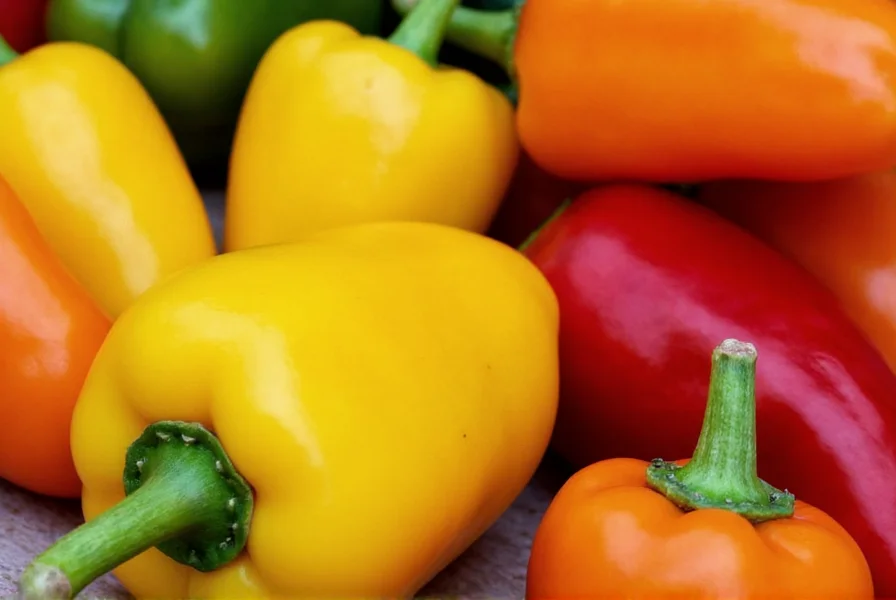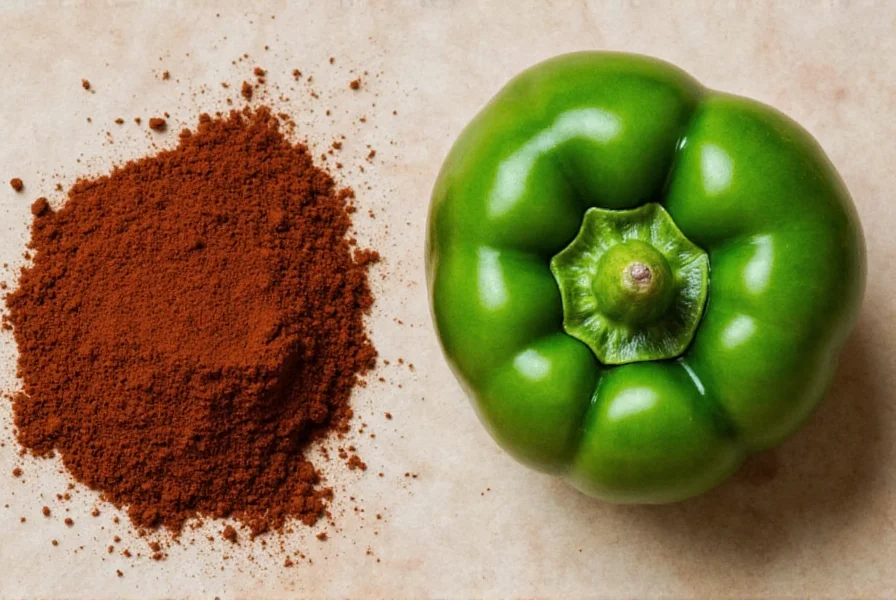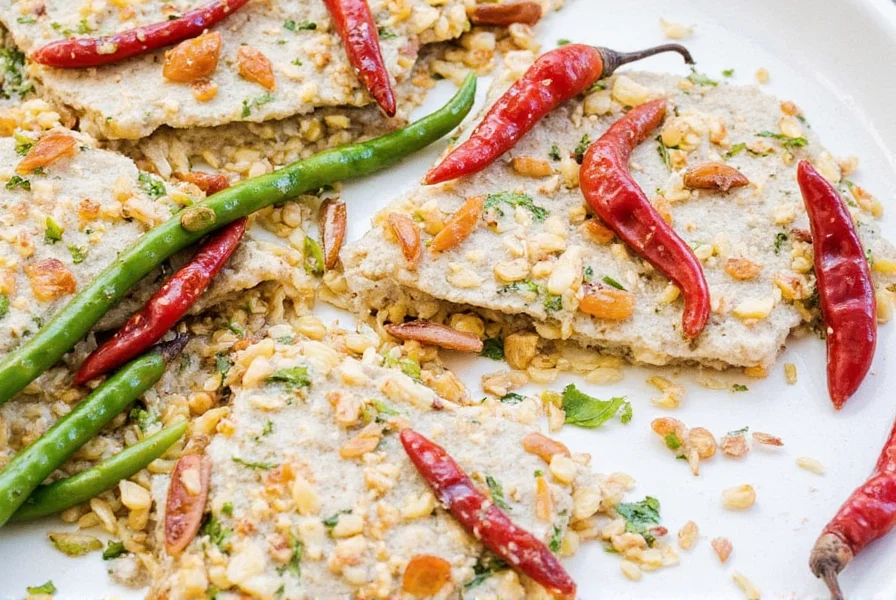| Feature | Pasilla | Ancho |
|---|---|---|
| Original Pepper | Chilaca | Poblano |
| Shape | Long, thin | Wide, flat |
| Color | Dark brown to black | Reddish-brown |
| Flavor | Earthy, smoky, coffee-like | Sweet, fruity, mild chocolate |
| Heat Level (Scoville) | 1,000–2,500 SHU | 1,000–2,000 SHU |
| Common Uses | Mole sauces, braised dishes | Salsas, soups, rellenos |
Are you confused about the difference between pasilla and ancho chiles? You're not alone. Pasilla and ancho are two popular dried peppers used in Mexican cuisine, but they come from different fresh peppers and have distinct flavors. Pasilla is the dried form of the chilaca pepper, while ancho is dried poblano. Pasilla offers earthy, smoky notes with coffee undertones, while ancho provides sweet, fruity flavors with hints of cocoa. Both are mild on the Scoville scale (pasilla: 1,000-2,500 SHU; ancho: 1,000-2,000 SHU), but pasilla is slightly hotter. This guide provides expert insights to help you choose the right chile for your dishes.
Table of Contents
What Is a Pasilla? A Dark Horse of Flavor
The chile pasilla (meaning "little raisin") is actually the dried form of the chilaca pepper. This long, narrow chile starts out green when fresh and turns deep brown to black as it dries. According to the New Mexico State University Chile Institute, pasillas are known for their complex flavor profile.

What Is an Ancho? The King of Sweet Heat
The ancho is the dried version of the poblano pepper. Fresh, it's called a poblano; once dried, it becomes an ancho. It's wide, heart-shaped, and typically reddish-brown in color. Anchos offer a sweet, fruity flavor with notes of dried cherry and cocoa, making them versatile for many dishes.

Flavor Profile Comparison: Sweet vs Earthy
If you imagine chiles as musical instruments, the pasilla would be the cello — rich, deep, and grounding. The ancho, on the other hand, is more like a violin — bright, expressive, and sweet.
- Pasilla: Think smoky, herbal, with undertones of dark fruit and espresso. It adds body and mystery to sauces.
- Ancho: Fruity and jammy, with a soft spice. It brings brightness without overwhelming the palate.
Heat Level Showdown: Mildly Wild or Just Warming?
Both fall on the milder side of the Scoville scale, but here's how they compare:
- Pasilla: 1,000–2,500 SHU
- Ancho: 1,000–2,000 SHU
In real-world terms, neither will make you reach for a glass of milk — unless you use a lot of them or pair them with hotter chiles. Still, pasillas can have a slightly sharper edge in heat and intensity.

Cooking Tips: Using Pasilla and Ancho Like a Pro
When to Use Pasilla
- In rich mole sauces (especially mole negro)
- To add depth to slow-cooked meats or beans
- Paired with other strong-flavored ingredients like cinnamon or clove
When to Use Ancho
- In salsas, enchilada sauces, and soups
- As a base for chili pastes or adobos
- When you want mild spice with big flavor
Buying Guide: Choosing the Best Chiles
Choosing between pasilla and ancho isn't just about flavor — it's also about quality. Here's how to pick the best ones at the store:
What to Look For
- Texture: Plump and flexible (not brittle).
- Color: Vibrant, not faded or dull.
- Aroma: Rich and fragrant — avoid musty or overly dry chiles.
- Size: Uniform size ensures even soaking and cooking.
Recommended Products
- Goya Whole Pasilla Peppers
- Features: Consistent size, minimal stem waste.
- Advantages: Perfect for grinding or making mole.
- Use Case: Mole sauce bases, marinades.
- Target Audience: Home cooks, Mexican cuisine lovers.
- Occasion: Weeknight dinners, weekend projects.
- El Mexicano Whole Ancho Peppers
- Features: Deep red hue, easy to deseed.
- Advantages: Strong aroma, excellent for blending.
- Use Case: Enchilada sauce, salsas, tacos.
- Target Audience: Beginners and pros alike.
- Occasion: Quick weeknight meals, party dips.
Recipes That Shine With Each Chile
Pasilla-Only Recipes
- Mole Negro
- Adobo de Pollo
- Oaxacan-Style Tamales
Ancho-Only Recipes
- Enchilada Sauce
- Beef Chili con Carne
- Ranchero Sauce
Can They Be Substituted?
You can sometimes swap one for the other, especially in sauces, but keep in mind the flavor shift:
- Use pasilla if you want a deeper, smokier note.
- Use ancho if you prefer sweeter, brighter tones.
Frequently Asked Questions
What's the main difference between pasilla and ancho chiles?
The main difference is that pasilla is the dried form of the chilaca pepper, while ancho is the dried form of the poblano pepper. Pasillas are long and narrow with a dark brown to black color, offering earthy, smoky flavors with coffee notes. Anchos are wider and heart-shaped with a reddish-brown color, providing sweet, fruity flavors with hints of cherry and cocoa.
Can I substitute pasilla for ancho in recipes?
Yes, you can substitute them in many recipes, but expect flavor differences. Pasilla has a deeper, smokier profile while ancho is sweeter and fruitier. In mole sauces, pasilla is preferred for its complex earthiness, while ancho works better in salsas where you want brighter notes. If substituting, use a 1:1 ratio but be aware of the flavor shift.
Which is hotter, pasilla or ancho?
Pasilla is slightly hotter than ancho, though both are considered mild chiles. Pasilla ranges from 1,000-2,500 Scoville Heat Units (SHU), while ancho ranges from 1,000-2,000 SHU. In practical cooking terms, neither will cause significant heat, but pasilla may have a slightly sharper edge in intensity.
How do I prepare dried chiles before using them in recipes?
To prepare dried chiles, first remove stems and seeds. Then toast them lightly in a dry skillet for 15-30 seconds per side until fragrant (be careful not to burn). Finally, soak in hot water for 15-20 minutes until soft. This process rehydrates the chiles and enhances their flavor. Some recipes may call for blending the soaked chiles into a smooth paste.
What are the best substitutes if I can't find pasilla or ancho?
For pasilla, good substitutes include mulato (for similar earthiness) or a combination of ancho and guajillo (for depth and color). For ancho, you can use guajillo for similar mild heat with more tang, or mulato for a similar sweet profile with more smokiness. In a pinch, a small amount of chipotle powder mixed with ancho can mimic pasilla's smoky depth.
How long do dried chiles last, and how should I store them?
Properly stored dried chiles can last 6-12 months. Store them in an airtight container in a cool, dark place. For longer storage (up to 18 months), keep them in the refrigerator or freezer. Check for mustiness, discoloration, or brittleness, which indicate they've gone bad. Always label with purchase dates to track freshness.
Conclusion: Which Should You Use?
So, what's the final verdict on chile pasilla vs ancho?
Think of them as two different tools in your spice toolkit:
- Pasilla is your go-to for deep, robust flavors — ideal for moles, stews, and sauces needing complexity.
- Ancho shines in everyday cooking, bringing mild heat and sweet depth to salsas, soups, and quick meals.
Now that you know the difference, you can confidently grab the right chile and turn up the flavor without turning up the burn.
Next time you're in the spice section, give those wrinkled peppers a second look. They might just be the stars of your next delicious dish!

Happy cooking! 🌶️🔥










 浙公网安备
33010002000092号
浙公网安备
33010002000092号 浙B2-20120091-4
浙B2-20120091-4